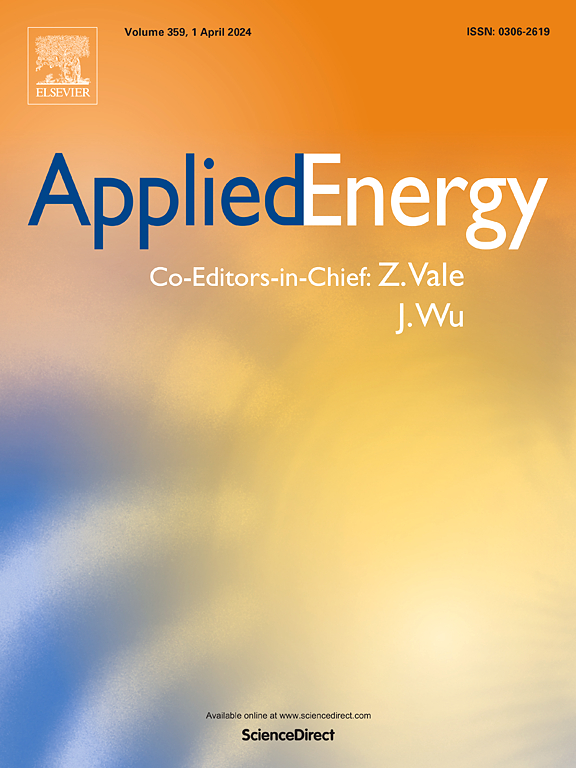Disturbed security-constrained and time-variant optimal power flow for dynamic power system based on chaotic-genetic-centroid puffin optimization
IF 10.1
1区 工程技术
Q1 ENERGY & FUELS
引用次数: 0
Abstract
Although the Security-Constrained Optimal Power Flow (SCOPF) model provides an effective model for simulating fault scenarios in power systems, it often overlooks bus-level fluctuations. Therefore, this paper introduces the Disturbed Security-Constrained Optimal Power Flow (D-SCOPF) to model the instability of power systems, leading to the development of a disturbed topology varying (DTV) test system. Additionally, to simulate the dynamic and time-varying properties of power systems, the fluctuations in electric vehicle load are incorporated into the system, resulting in the construction of a Time-Variant (TV) test system. These enhancements improve model realism but also significantly increase computational complexity. As a result, finding feasible solutions in such a complex model becomes a substantial challenge. Considering the high-dimensional and multi-constraint properties of the OPF problem, this paper proposes a novel Chaotic-Genetic-Centroid Puffin Optimization (CGC-PO) algorithm based on Arctic Puffin Optimization (APO). CGC-PO aims to specifically improve APO’s exploration, exploitation, and population merging processes through centroid opposition-based learning, normalized chaotic local search, and genetic hybrid incorporation. To validate the feasibility of the proposed algorithm, a series of tests were first conducted on benchmark functions, followed by quantitative, convergence, and statistical analyses. Besides, different modified test systems were constructed based on the IEEE 30-bus, IEEE 57-bus, IEEE 118-bus and Illinois 200-bus systems. Both single-objective and multi-objective optimization functions were evaluated on these test systems. By comparing the results with those obtained from several well-known optimization algorithms, including TLBO, PSO, PLO, SMA, HGS, MGO, ALA, MSO and APO, the effectiveness, superiority, and robustness of the proposed CGC-PO algorithm are demonstrated.
基于混沌遗传-质心海鹦优化的动态电力系统扰动安全约束时变最优潮流
尽管安全约束最优潮流(SCOPF)模型为模拟电力系统故障场景提供了一个有效的模型,但它往往忽略了母线水平的波动。因此,本文引入受扰动安全约束的最优潮流(D-SCOPF)来模拟电力系统的不稳定性,从而开发了受扰动拓扑变化(DTV)测试系统。此外,为了模拟电力系统的动态和时变特性,将电动汽车负载的波动纳入系统,从而构建了时变(TV)测试系统。这些增强提高了模型的真实感,但也显著增加了计算复杂性。因此,在如此复杂的模型中找到可行的解决方案成为一项重大挑战。针对OPF问题的高维性和多约束性,提出了一种基于北极海雀优化(Arctic Puffin Optimization, APO)的混沌遗传质心海雀优化(CGC-PO)算法。CGC-PO旨在通过质心对立学习、归一化混沌局部搜索和遗传混合融合,具体改进APO的探索、开发和种群合并过程。为了验证算法的可行性,首先对基准函数进行了一系列测试,然后进行了定量分析、收敛分析和统计分析。此外,基于IEEE 30总线、IEEE 57总线、IEEE 118总线和Illinois 200总线系统构建了不同的改进测试系统。在这些测试系统上对单目标和多目标优化函数进行了评价。通过与TLBO、PSO、PLO、SMA、HGS、MGO、ALA、MSO和APO等几种知名优化算法的结果比较,验证了CGC-PO算法的有效性、优越性和鲁棒性。
本文章由计算机程序翻译,如有差异,请以英文原文为准。
求助全文
约1分钟内获得全文
求助全文
来源期刊

Applied Energy
工程技术-工程:化工
CiteScore
21.20
自引率
10.70%
发文量
1830
审稿时长
41 days
期刊介绍:
Applied Energy serves as a platform for sharing innovations, research, development, and demonstrations in energy conversion, conservation, and sustainable energy systems. The journal covers topics such as optimal energy resource use, environmental pollutant mitigation, and energy process analysis. It welcomes original papers, review articles, technical notes, and letters to the editor. Authors are encouraged to submit manuscripts that bridge the gap between research, development, and implementation. The journal addresses a wide spectrum of topics, including fossil and renewable energy technologies, energy economics, and environmental impacts. Applied Energy also explores modeling and forecasting, conservation strategies, and the social and economic implications of energy policies, including climate change mitigation. It is complemented by the open-access journal Advances in Applied Energy.
 求助内容:
求助内容: 应助结果提醒方式:
应助结果提醒方式:


